Nestled at the tip of the Messinian peninsula, Koroni’s Venetian fortress rises above a small town that feels quietly untouched by time.
Koroni stunned me with its blend of medieval walls, sun-bleached houses, and the winding lanes that spill down to the sea.
There’s an old-world charm in the air, mixed with salty breezes, that just invites you to slow down and soak it all in.
Just beyond the fortress, I stumbled upon a cliffside monastery that overlooks the Evrotas river gorge.
It offers peaceful views and a serene atmosphere.
As I wandered through the monastery’s courtyard, I felt a deep sense of history and tranquility.
Between the Venetian architecture and the calming spiritual retreat, Koroni became one of Messinia’s true hidden gems for me.
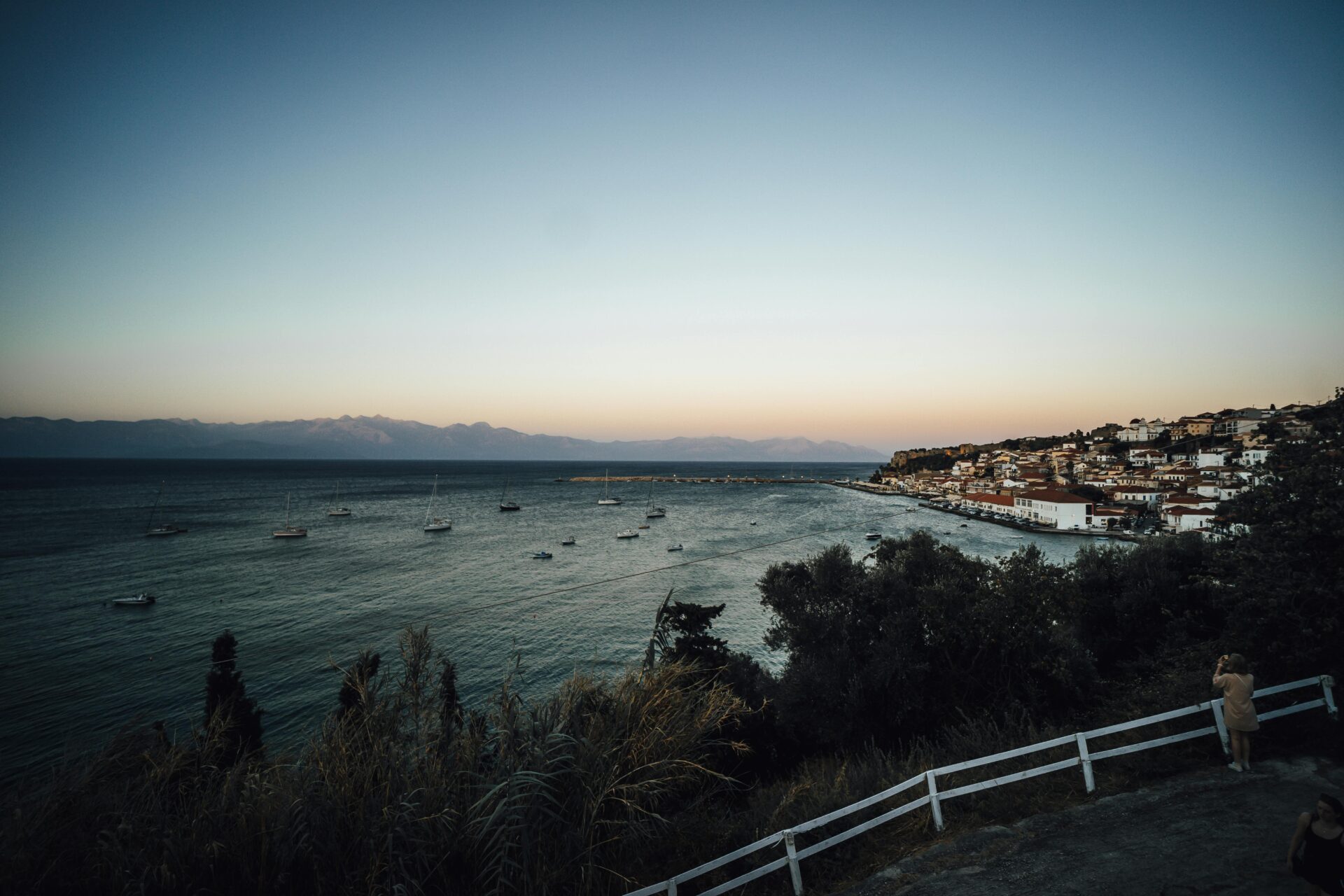
Unveiling Koroni’s Venetian Past
In Koroni, history doesn’t hide behind glass—it’s everywhere, in stone walls and winding alleys.
Every step reveals something about Venetian rule, from massive fortifications to symbols of power that still keep watch over the sea.
The Storied Walls of the Venetian Castle
The Venetian castle towers above the town, dominating the view and commanding the coastline.
When I explored the crumbling ramparts, I traced the outline of its thick, defensive walls that have protected generations.
Venetians built these stone boundaries in the 13th century, hoping to control trade and secure the southern entrance to the Peloponnese.
Inside these weathered walls, I found traces of chapels, houses, and even the remains of a monastery.
The castle complex feels almost like a small village, with olive trees growing where soldiers once marched.
Signs along the paths point out old watchtowers and secret escape routes—a reminder that pirates and rival empires always threatened this place.
The fortress isn’t just a relic; it pulses with daily life.
Locals walk their dogs along the ramparts, and children play where guards once stood.
I felt the past and present blend together, making the site both a historical landmark and part of the town’s heartbeat.

Legacy of Trade, Nobility, and Conquest
Venetian rule turned Koroni into a key trading port.
Ships loaded with olive oil, wine, and salt sailed from these shores to Venice and beyond.
I noticed how Koroni’s layout, with clustered mansions and narrow lanes, really shows off its merchant roots.
Wealthy Venetian nobles built estates here, some with arched doorways and coats of arms that still stand out today.
The town’s population grew diverse.
Greeks, Venetians, and others lived side by side.
Markets buzzed with languages and goods from across the Mediterranean.
Finding centuries-old wells and storage spaces built by Venetian engineers reminded me how vital this place was for commerce and defense.
Conquest and rivalry left their mark—when the Ottomans arrived, these same Venetian strongholds became battlegrounds and changed hands again.
Layers of history stack up in Koroni, visible in every weathered wall and sunlit square.
Walking these streets, I could sense the town’s enduring spirit—centuries of ambition, trade, and resilience all woven together.
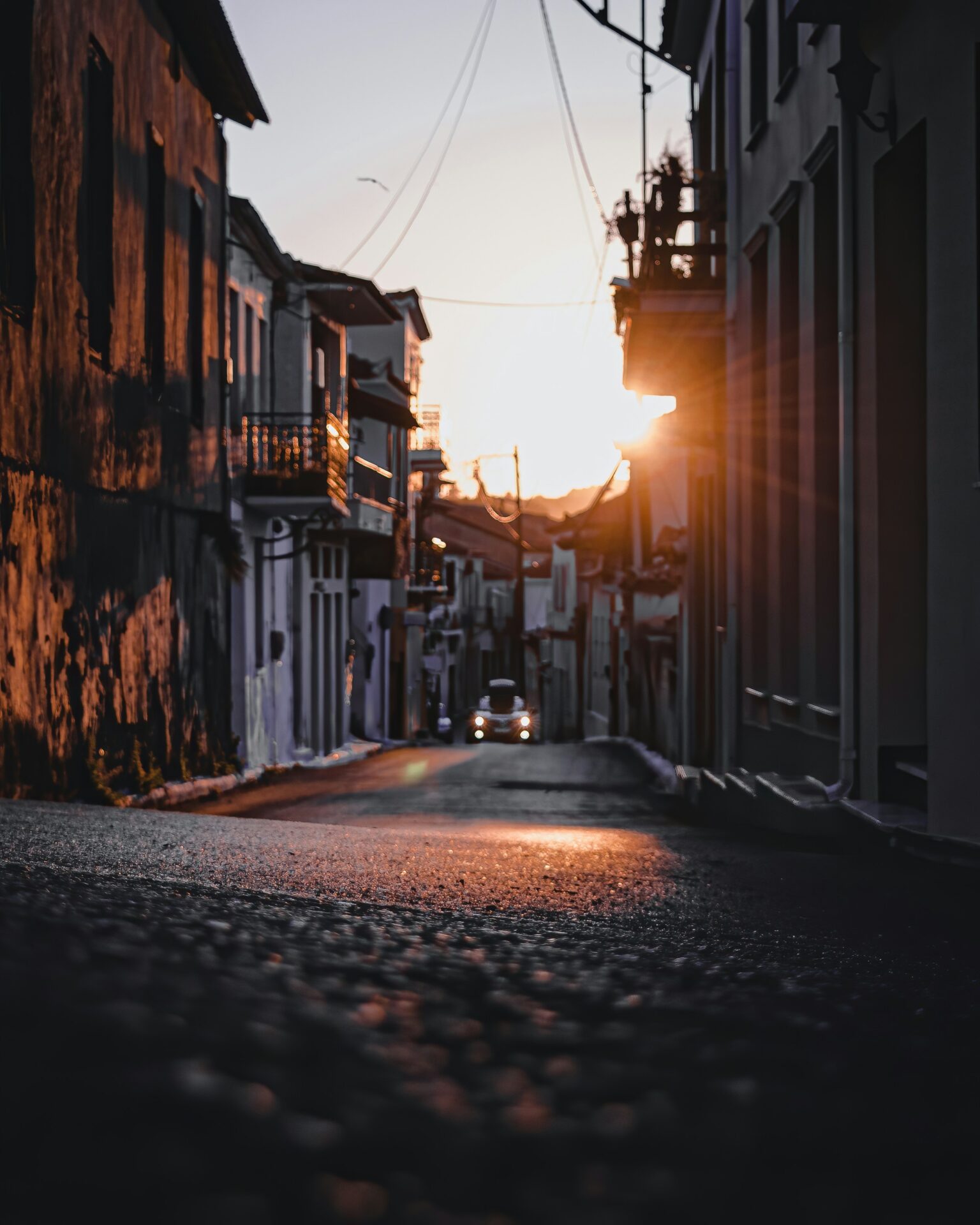
The Cliffside Monastery: Spiritual Oasis Above the Sea
High above the water, the Panagia Eleistria Monastery in Koroni combines faith, tradition, and breathtaking scenery in one unforgettable spot.
The monastery has drawn visitors for centuries.
It offers a mix of peaceful reflection and natural beauty that’s tough to find anywhere else.
A Walk to Panagia Eleistria Monastery
Getting to the Panagia Eleistria Monastery means leaving behind the busy waterfront and climbing up narrow stone paths.
Along the way, I passed flower-filled courtyards and low whitewashed walls glowing in the Messinian sun.
The entrance is simple but welcoming.
Local women sweep the steps with straw brooms, and the faint scent of incense drifts from inside.
I’m struck by the quiet.
Even with others around, the air feels thick with calm.
Inside, icons and gold-painted details catch the light, hinting at the monastery’s treasured history.
Useful tip: Shoulders and knees should be covered when entering as a sign of respect.
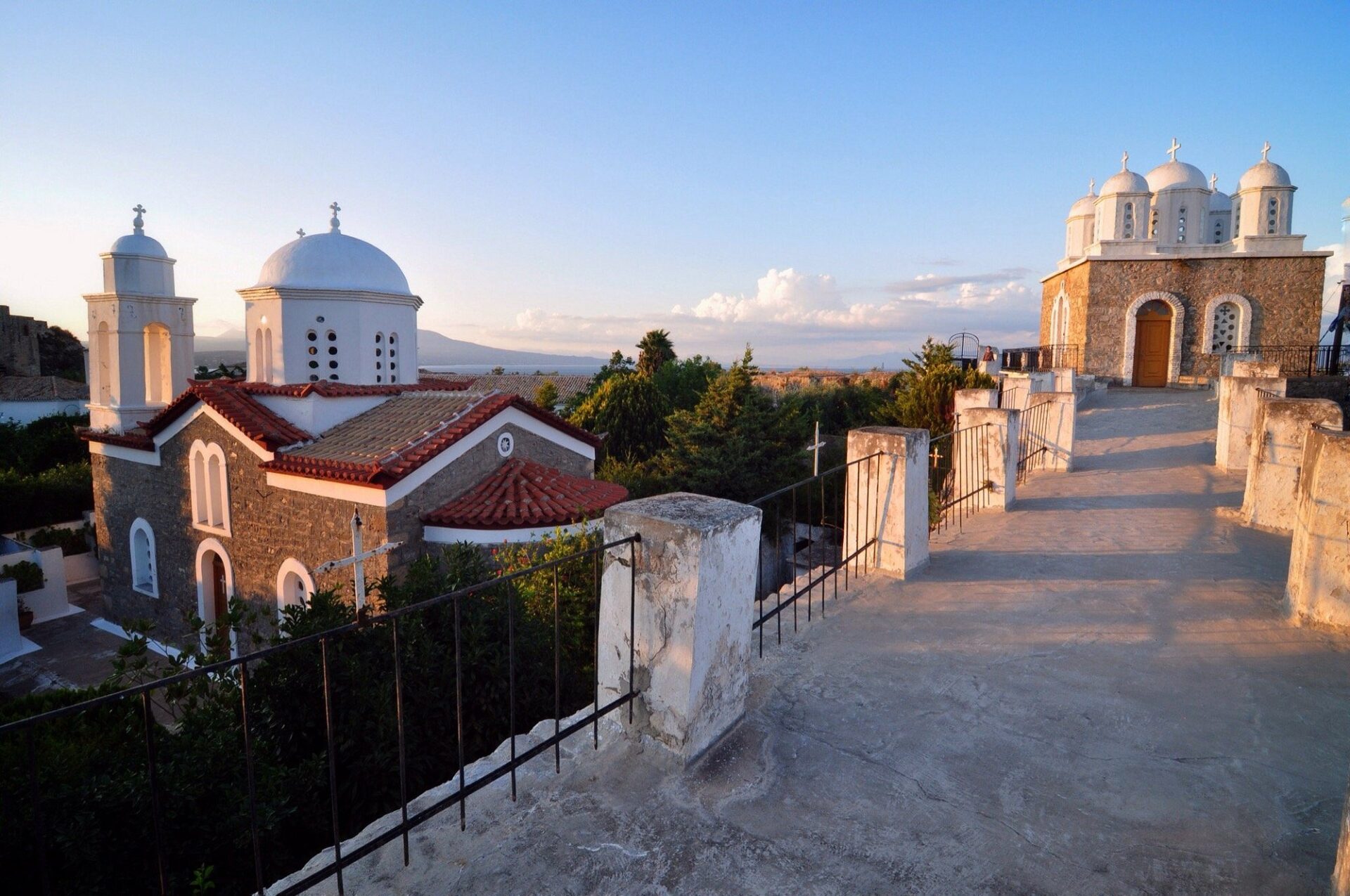
Breathtaking Cliffside Views
Once I reached the edge of the cliff, the view honestly took my breath away.
The Aegean Sea stretches far below, sparkling in shades of sapphire and turquoise.
From the monastery courtyard, I could spot fishing boats gliding past and gentle waves brushing the rocks.
Birds circle in the salt air, adding to the feeling of being suspended between earth and sea.
Photo spot: There’s a flat stone terrace beside the old olive tree—perfect for panoramic shots without a crowd.
Sunrise and sunset both cast incredible light across the cliffs, changing the mood completely.
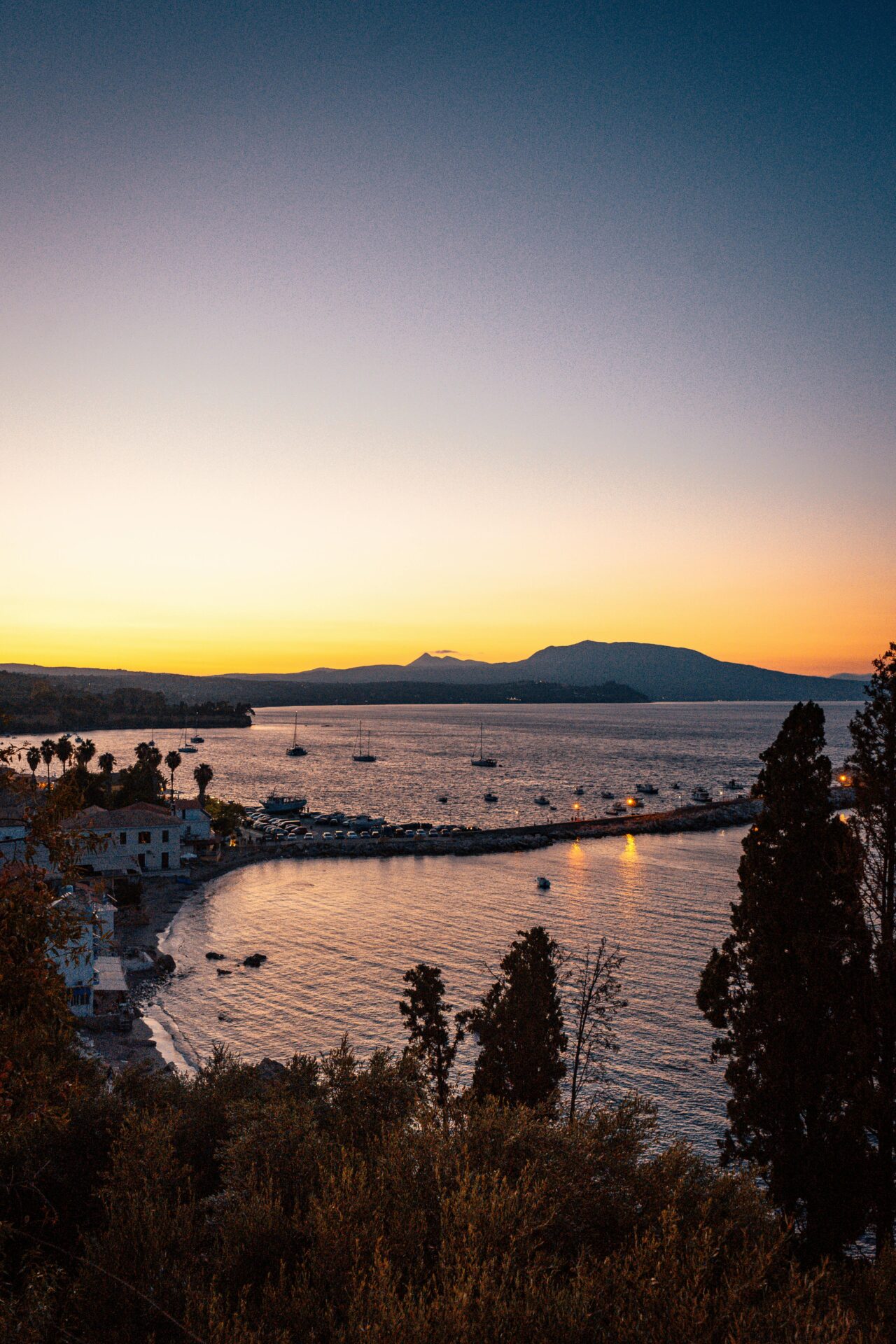
Living History: Monastic Traditions Today
This monastery isn’t just old—it’s alive with tradition.
Monks here keep up their routines, tending gardens, preserving sacred objects, and hosting religious celebrations that bring the community together.
During my visit, I watched a small service—just singing, candles, and prayer.
It was humble but deeply moving.
Locals visit often to seek blessings or leave offerings, and I felt genuinely welcome to join in.
Small signs around the grounds explain history and customs, so visitors can learn as they wander.
Sometimes there’s a little stall with handmade soaps and honey, supporting the monastery’s upkeep.
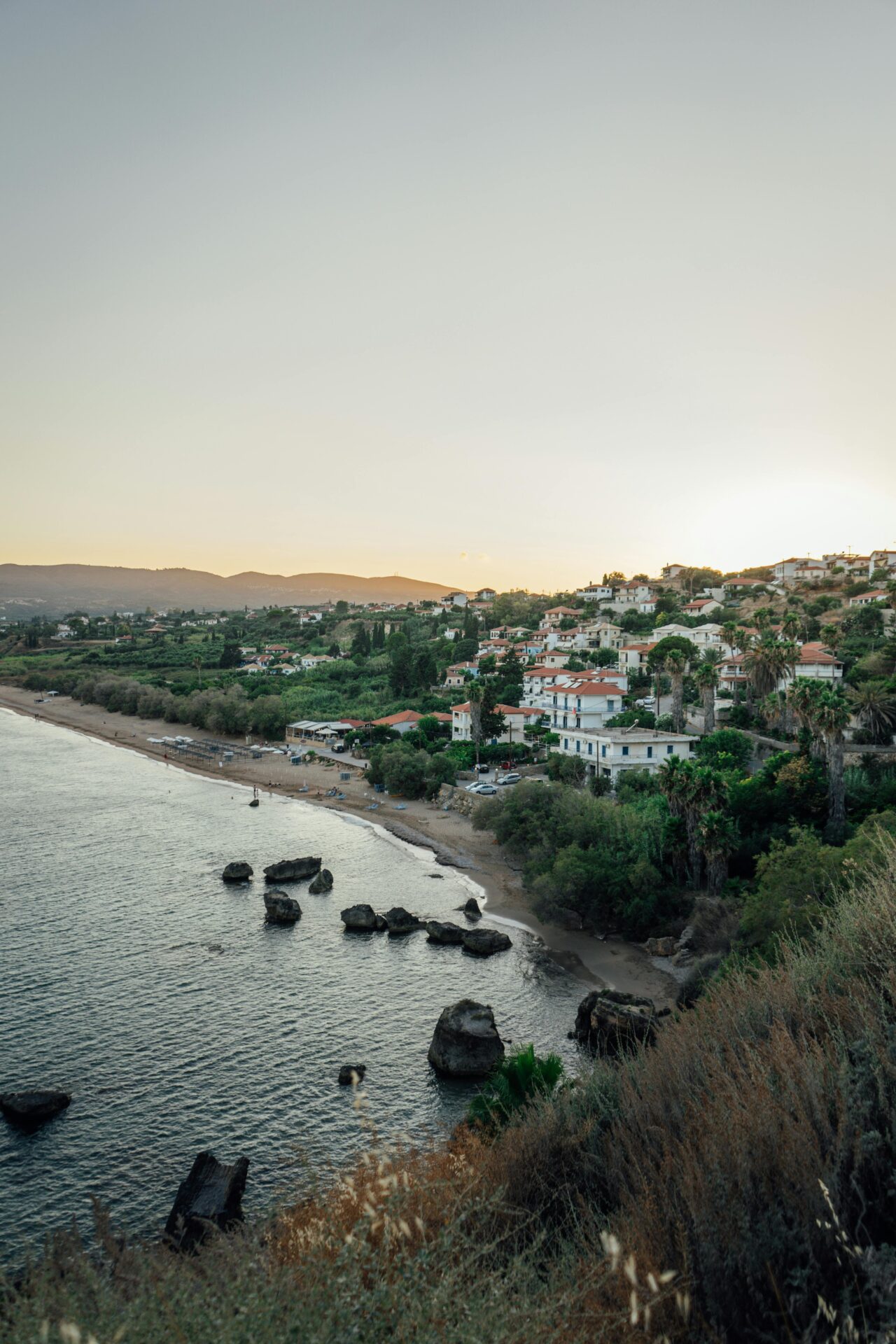
Koroni’s Mesmerizing Townscape
Red-tiled roofs spill down a sunlit hillside, meeting blue water far below.
I found Koroni alive with colors, local energy, and easy charm—places meant to be explored slowly, on foot, from one inviting corner to the next.
Wandering Colorful Alleyways
Getting lost in Koroni’s narrow streets turned into one of the best parts of my trip.
Old stone houses line the winding paths, painted in pale blues, yellows, and bright whites.
Vines and pots of pink bougainvillea trail from balconies overhead.
Many doorways are painted bold blue, and sleepy cats stretch in shady patches.
I passed tiny bakeries, shopkeepers calling out greetings, and families sharing meals in open courtyards.
Walking up, the Venetian castle walls appeared at every turn.
The alleyways felt peaceful, with the sea breeze always close by.
I let my feet wander, never really worrying about getting lost.
Every detour offered a new scene—a laundromat with herbs drying outside, or an old woman feeding pigeons.
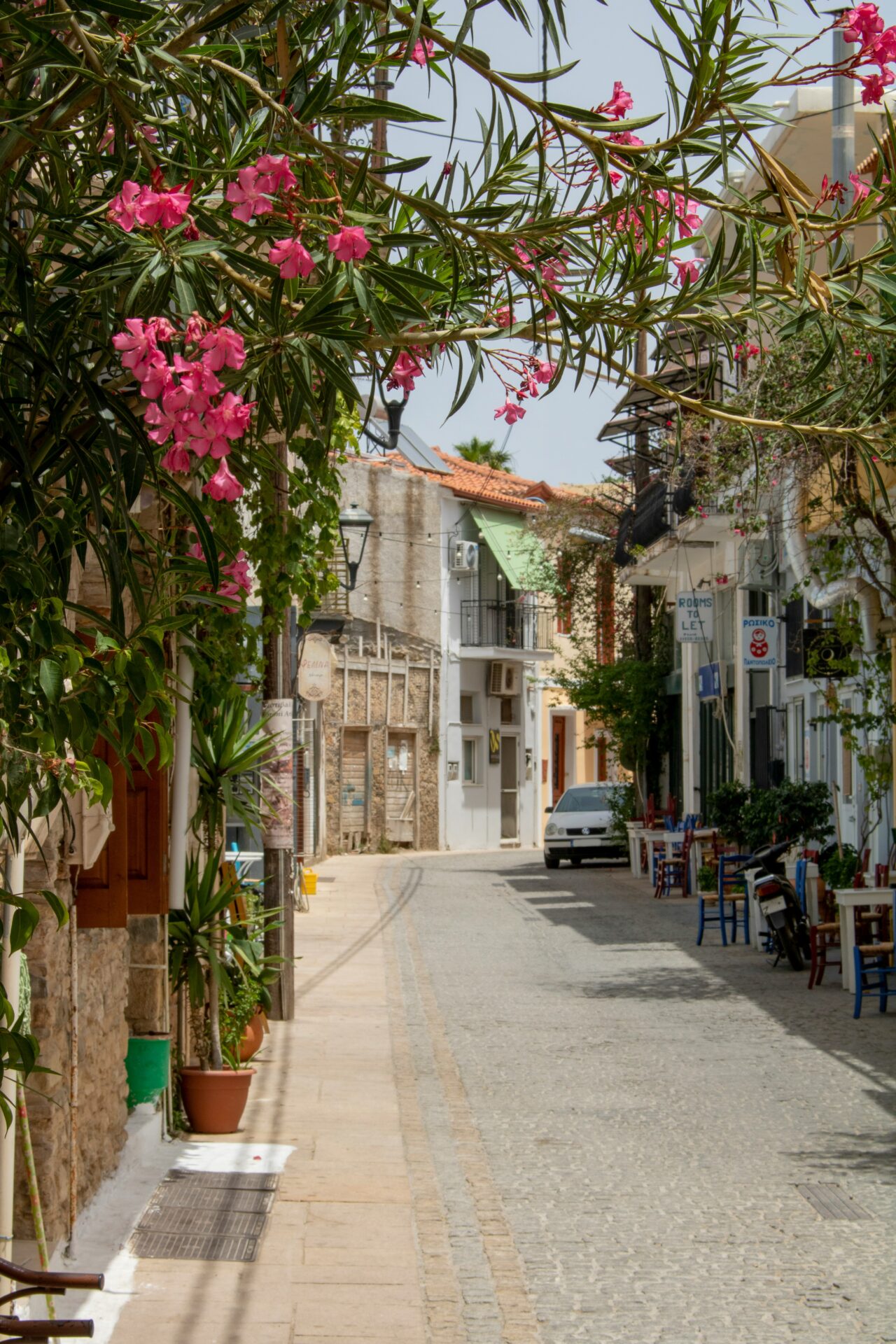
Seafront Promenade and Café Culture
The heart of town faces the water, where a curved seaside promenade runs past boats and nets piled along the dock.
Morning light sparkled on the Messinian Gulf.
Fishermen mended nets, and scooters zipped by with bakery goods balanced on the seat.
I found the best way to enjoy local life was to pick a café and sit outside with a coffee.
There’s no rush on the promenade—just the rhythm of conversation, the clink of cups, and the steady tap of dominoes played by older men.
Cafes and small tavernas serve fresh seafood and simple Greek dishes.
Tables spill out onto the stone walkway, inviting long, lazy lunches.
Sometimes I’d watch the ferry unloading travelers, or catch the sunset while locals chatted over evening drinks.
| Favorite Promenade Cafés | Local Treats to Try |
|---|---|
| Cafe Koroni | Greek coffee |
| Taverna To Limani | Fresh grilled fish |
| Bakery O Fournos | Loukoumades |
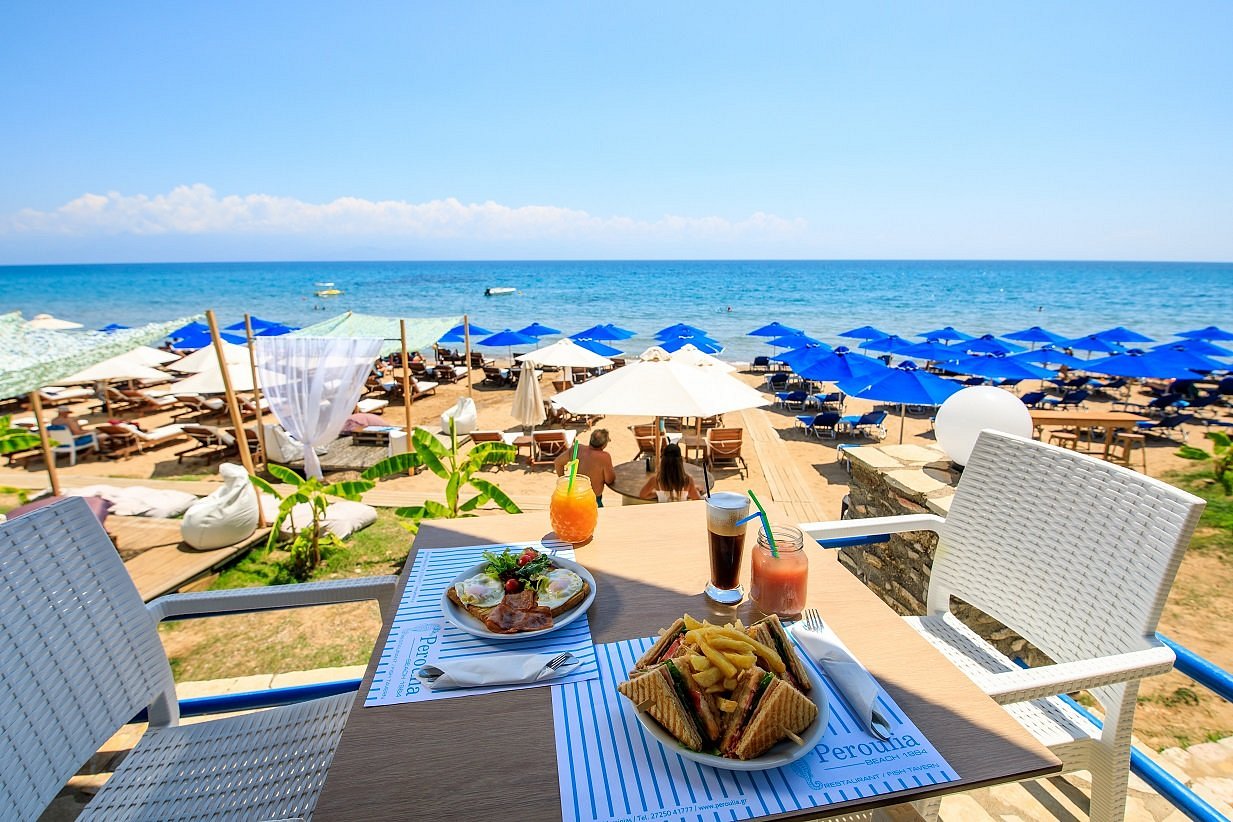
Hidden Gems and Local Experiences
Wandering through Koroni, I realized the best memories came from savoring local flavors and discovering handmade treasures.
There’s real character here—both in the food and the crafts tucked into its colorful streets.
Sampling Messinian Cuisine
Trying authentic Messinian dishes in Koroni was a highlight for me.
Every meal celebrated fresh, local ingredients.
The scent of grilled fish at a seaside taverna pulled me in, and I couldn’t resist tasting kalamata olives, tangy feta, and sun-drenched tomatoes tossed with golden olive oil.
A bowl of ladera—vegetables slow-cooked in olive oil—showed just how flavorful simple food can be.
On another night, I tried savory souvlaki and homemade baklava under a canopy of stars.
Menus always featured fresh-caught seafood, from red mullet to calamari.
Friendly owners often suggested a glass of local wine to go with it.
I scribbled down my favorites in a little notebook:
- Grilled sardines with lemon and herbs
- Ladenia, a Messinian-style olive oil pie
- Traditional honey-soaked loukoumades
These meals felt like an introduction to local life, where recipes pass down through families and every bite tells a story.
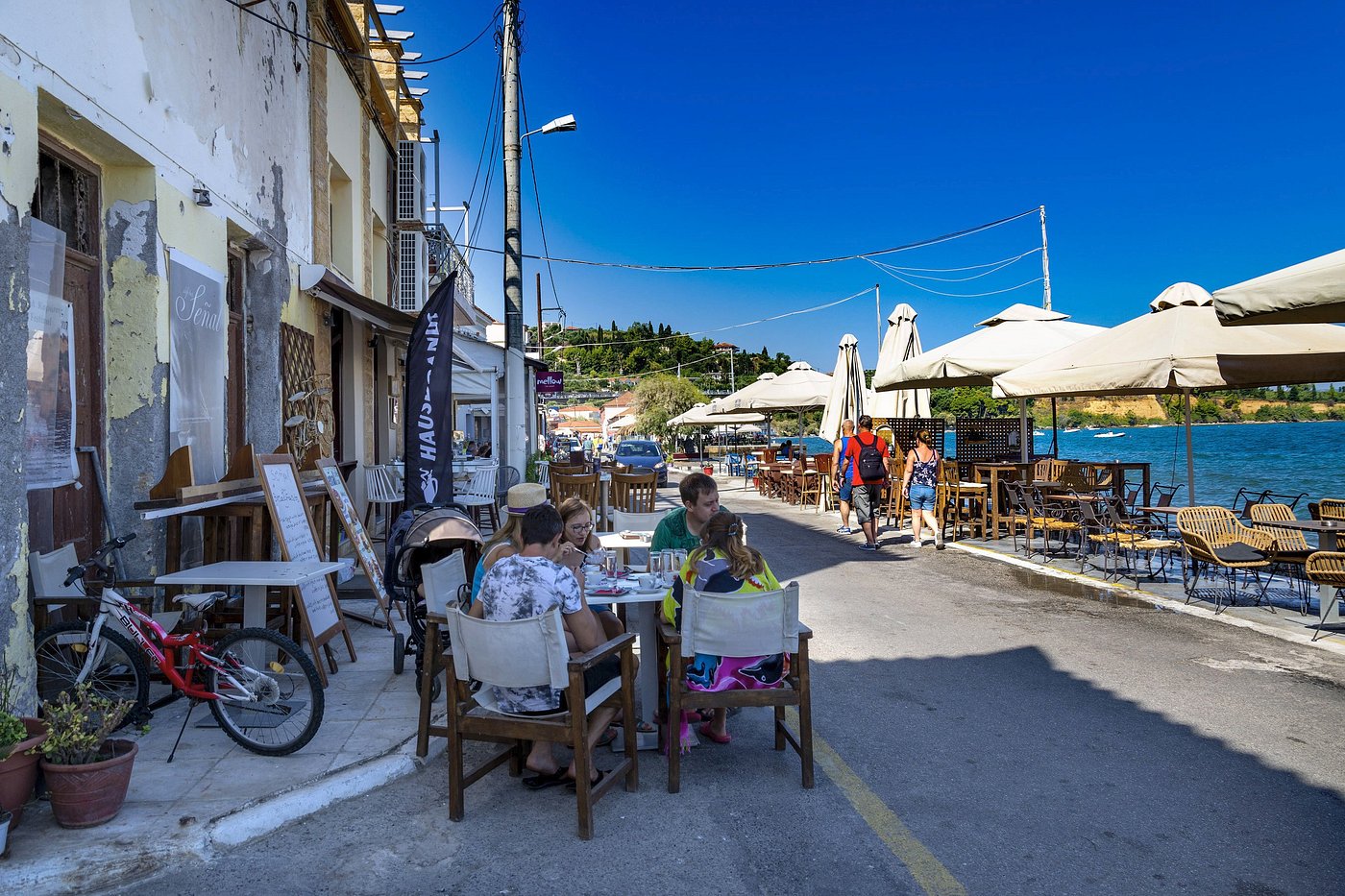
Artisan Shops and Traditional Crafts
Koroni’s winding lanes led me to workshops bursting with color and creativity.
I paused at hand-painted pottery shops, admiring vases and cups in bright blues and earthy reds.
In another tiny store, I watched a weaver create delicate lace, her fingers moving quickly and surely.
I chatted with an elderly woodcarver who smiled as he shaped olive wood into beads and spoons.
His hands seemed to carry generations of skill.
Some workshops welcomed me in, letting me watch as olive oil soaps or beeswax candles were poured and set.
Picking up a handwoven basket or a painted icon didn’t feel like shopping—it felt like taking home a bit of Koroni’s soul.
The artisans loved sharing stories, always eager to explain the meaning behind a pattern or a carving.
Walking away with a few handmade gifts, I knew each one would remind me of my time in this little Messinian gem.
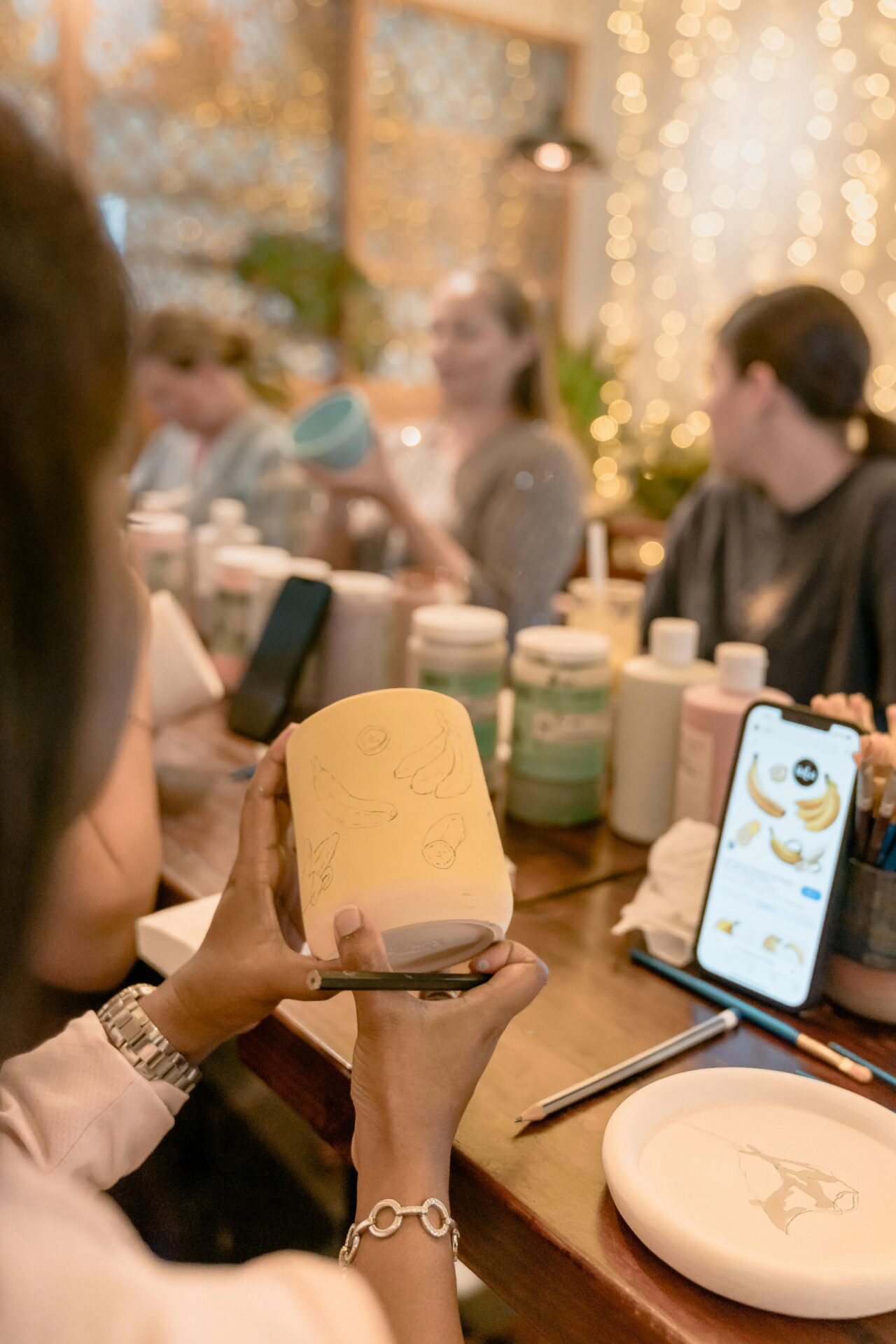
Practical Travel Tips for Visiting Koroni
Reaching Koroni takes a little planning, and timing your visit can totally change the vibe of your trip.
My own journey taught me how important both travel logistics and seasonality are for making the most out of this beautiful Messinian town.
Getting to Koroni
Koroni sits at the tip of the southern Peloponnese, so you’ll probably start with a flight into Kalamata Airport.
From there, it’s about a 50-minute drive.
I rented a car, which made things simple and let me explore at my own pace.
There’s also a public bus (KTEL) service from Kalamata.
While it’s inexpensive, bus timetables can be limited, especially outside the summer months.
Driving through the Messinian countryside was a highlight in itself.
Winding roads offer coastal views and olive groves all the way to town.
Parking in Koroni can be tight, but I usually found spots near the marina or just outside the old town walls.
If you’re considering road trips, Koroni pairs easily with Methoni and Pylos—two more fortress towns along this stretch of coast.
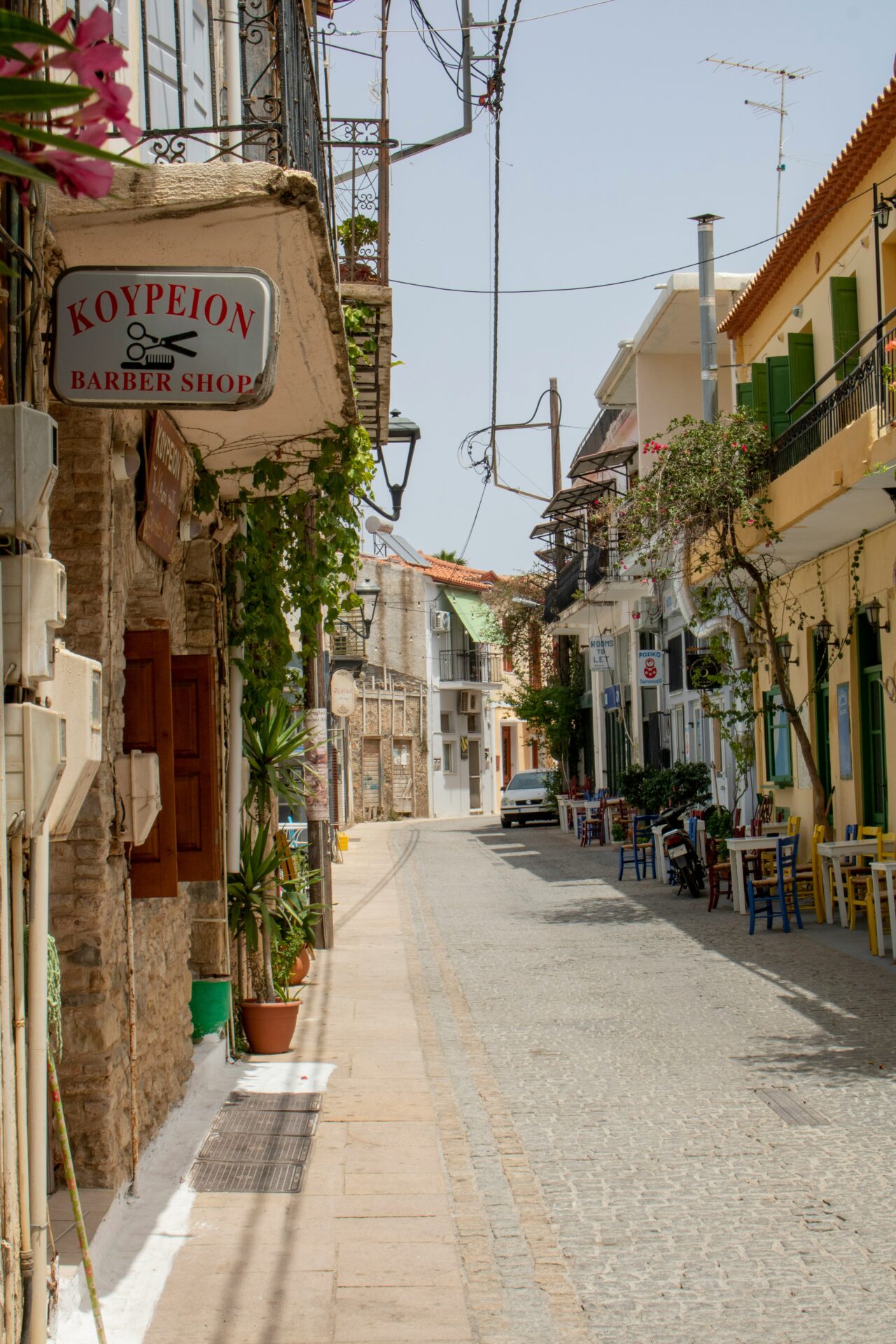
Best Times to Visit
The best months to visit Koroni? I’d say May–June and September–early October. You’ll get warm, pleasant days, but it’s not sweltering.
The crowds thin out compared to the chaos of July and August. Greece just explodes with tourists in midsummer.
I loved wandering the castle or monastery on those quieter mornings. By afternoon, it’s still sunny enough for a swim.
July and August can be a wild ride—festivals, packed waterfronts, and a buzzing energy that’s hard to resist if you’re up for it. Sure, it’s hotter and busier, but some folks live for that.
Winters stay mild, but honestly, lots of places close up shop, and some sites barely open. For me, late spring hit the sweet spot—green hills, clear water, and plenty of room to soak up Koroni’s magic without feeling rushed.

